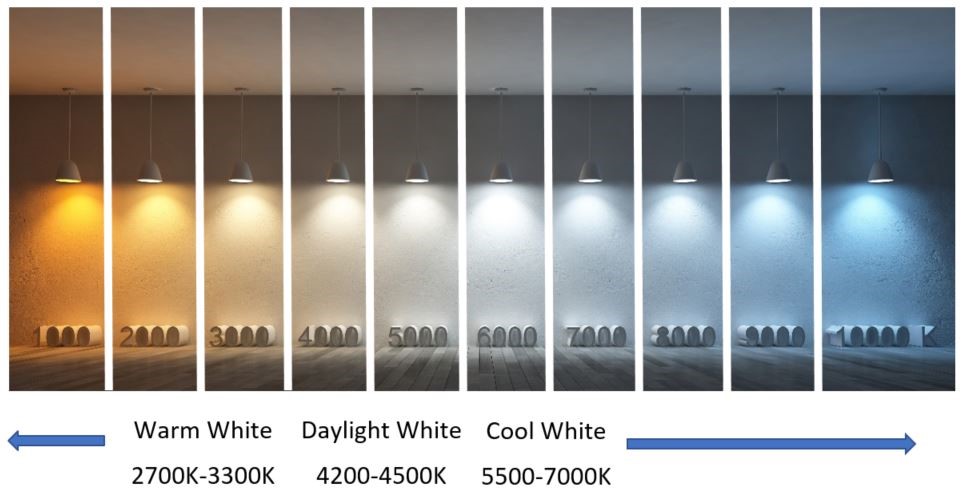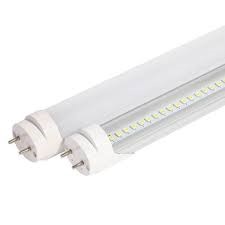
Purchasing LED lights for both residential and commercial applications is very different than purchasing traditional lighting was eight years ago. Before you go shopping here is 5 things to look out for before you purchase.
LED Lumens Vs. Watts:
Not all numbers are created equal. Forget what you think you know regarding wattage. When shopping for correct bulb or fixture, you must first understand what the meaning of wattage and lumen is. Wattage or watts is a measurement on how much energy a light is using, not the brightness of the light. Lumen’s simple meaning is the measurement of brightness from a light source. In traditional lighting there was a direct correlation between watts and brightness. For example, a 75w light bulb produces more lumens than a 60w bulb. LED lighting is not so simple. A Light-emitting diode or LED has a larger range of efficiency, some lights produce more lumens per watt(L/W). For example, an 8w LED bulb can produce more lumens than a 12w LED bulb pending on manufacture and specification. Using this example, someone purchasing the 8w bulb will save the shopper more energy during the bulb’s lifespan than the 12w bulb while producing the same brightness. So, when shopping for a light product forget what you thought you knew and pay attention to efficiency of brightness, not wattage.
Light Color Temperature:
You like what you like. Color Temperature does not mean brighter even if it seems that way. LED lighting temperature is based on the kelvin measurement system. A warm temperature is usually 3000k or less, cool white is usually around 4000k, and bright white or daylight is around 5000k. Warm white will produce a more yellow look while bright white will have a more whitish blue look to it. Simply put the lower the kelvin the more yellow, the higher the kelvin the whiter/blue it will be. But what is the right choice? Which is brighter? The answer to both is D none of the above. Everyone interprets temperature differently, some think a 5000k looks brighter than a 4000k. The temperature does not change the brightness of light, just the appearance of brightness per the individual. While shopping for a light product think of the following. Where is the light being used? What is the light being used for? What is the objective of the light? Remember, there is no wrong answer to color temperature. To each their own.

LED Price
You’re not always getting more bang for buck, know before you spend the cash. LED lighting has dropped in price about 50% in the last 5 years. But what is the difference? The market is flooded with different manufactures and pricing all claiming to the best. Things a consumer should be mindful of. Warranty, manufactures play a tricky game on LED products. For example, a LED product will claim to have a 5-year 50,000-hour operating life warranty. If you read the fine print this means they will warranty the product for 5 years or 50,000 hours witch ever comes first. So, a product with a 7-year 50,000-hour operating life warranty will cost more, but it essentially holds the same warranty. Paying more for a name brand doesn’t always mean a better product. Just the other day I visited my local pharmacy to buy a bottle of ibuprofen for my aging back. I was presented with two options, buy the name brand or the pharmacy brand. After reading each box carefully I realized there was no difference besides the price tag. The is most likely because they are made on the same manufacturing line from the same pharmaceutical company. Lighting is no different. So before spending your hard-earned dollar read the fine print, and buying a name doesn’t always mean better or different.
LED Dimming and Switches
Not all LED’s are dimmable. The old dimming switch might not work either. When buying a LED do not assume it will be a plug and play application. Unlike traditional lighting there are some LED lights that are not capable of dimming. Incandescent bulbs work by running electric current through a wire filament, a dimmer switch lowers the current to the wire filament to dim. LED’s are not dimmed or brighten with the increase or decrease of current. LED light emitt’s from a semiconductor chip, so its either all on or off. The LED is always using the same current. Instead LED’s create a dimming effect in two different ways, pulse-width-modulation (PWM LED) and analog dimming. The product specification or box will specify if the LED is dimmable or not. If your buying and wish to dim, make sure you verify before purchase. The same applies to dimming switches or controls on your property. Most likely the current measures installed are made to adjust current and will not dim LED lighting. When your shopping you want to make sure pick up a switch or control device the capable of dimming LED lights by means of PWM, analog, or both.
LED Fixture versus an LED Lamp/Bulb
A cost-effective lamp or bulb might not be the best solution for your property or residents. When deciding between a fixture or lamp replacement one must consider some key points. Not all lamps will work in old fixtures. LED lights worst enemy is heat. If the fixture is enclosed and the LED product doesn’t have the correct heat syce technology the product will most likely fail before its expected life span. After replacing the lamp, one might spend more than they would have with a new fixture. What are the local utilities companies offering for incentives? There a different incentive offered in different areas. In most areas the extra incentives will offset the cost of new product. For example, you could pay $5.00 for a lamp with a $2.00 dollar incentive or pay $15.00 dollars for a new fixture with a $12.00 incentive. The net cost remains the same, but you gain the cosmetic appeal of beautiful new fixture. The last thing to consider is installation. If you are doing itself or paying an electrician this has a large effect on the time and cost for a fished replacement. Each situation should be evaluated different. How much time would it take to replace the fixture vs lamp? How much with the installation affect the overall cost or time? When combined selecting the right product that last the longest, capitalizes on the most incentives offered, and spends the lowest time or money for installation will be the best choice for any application.



